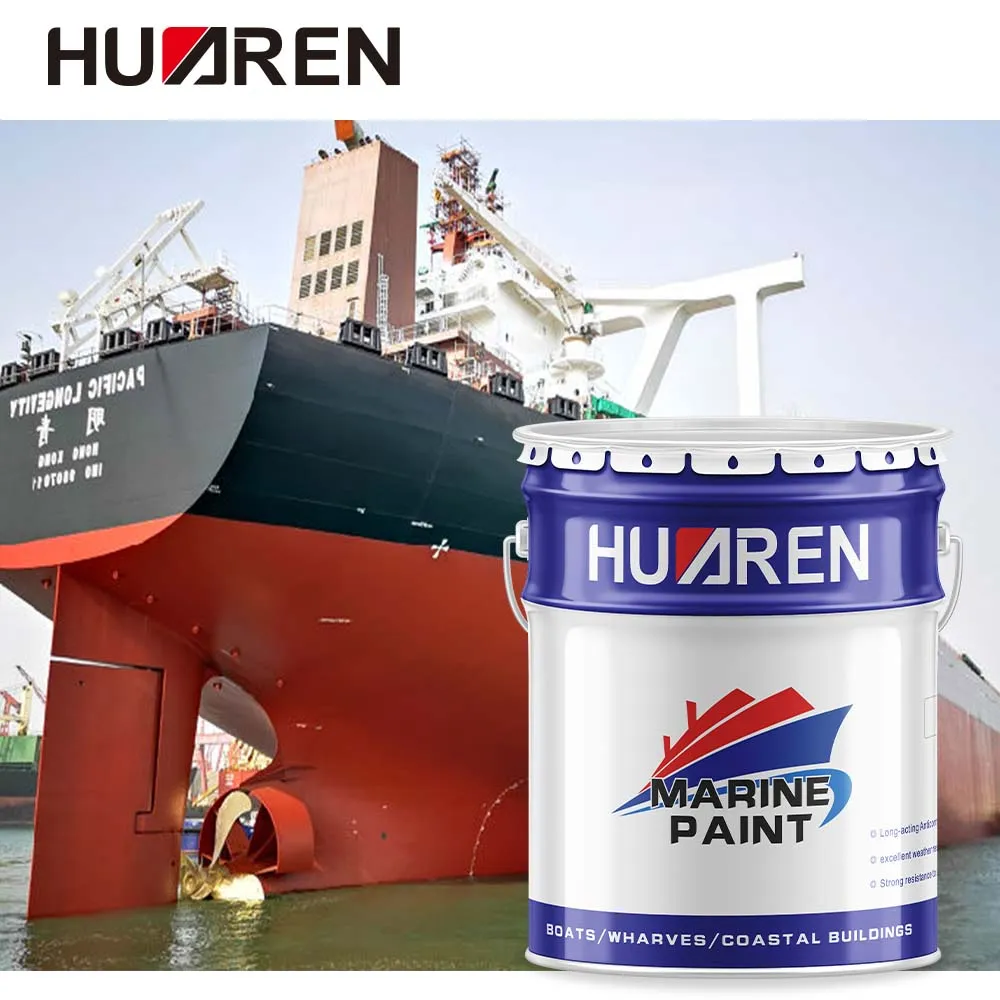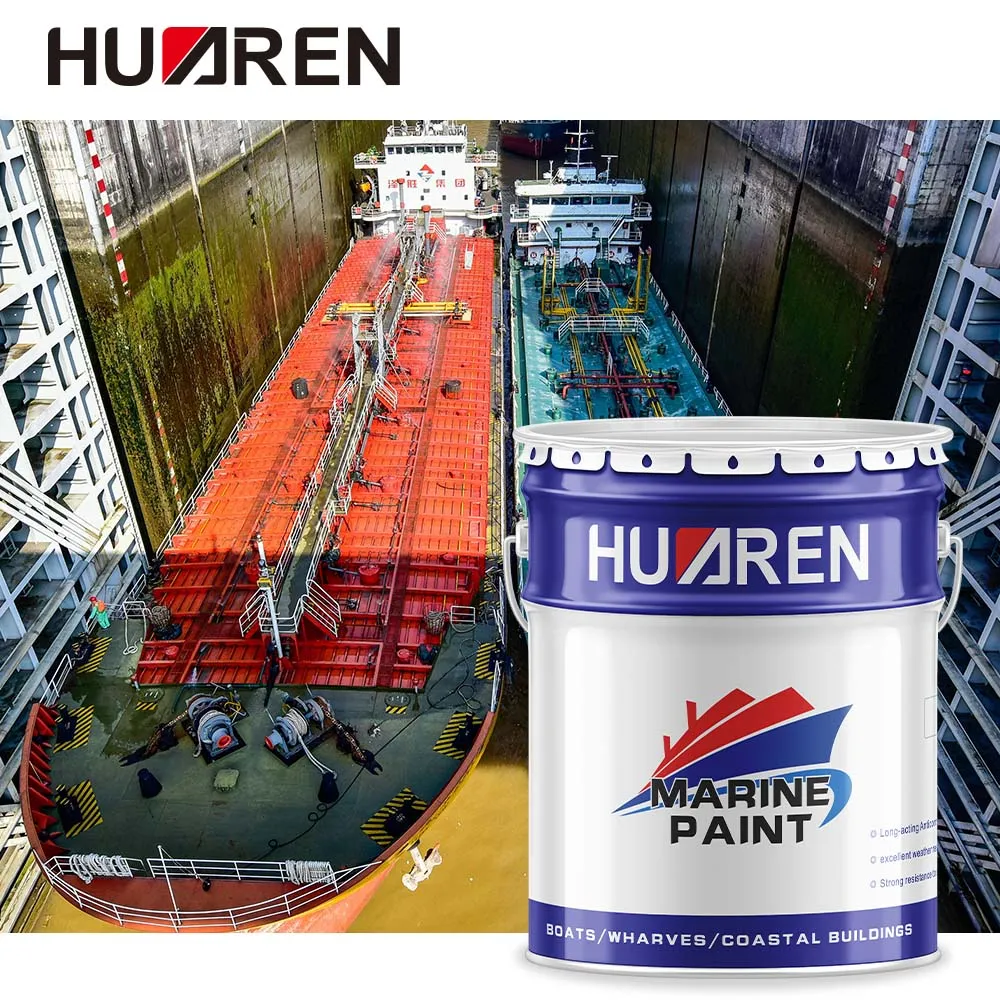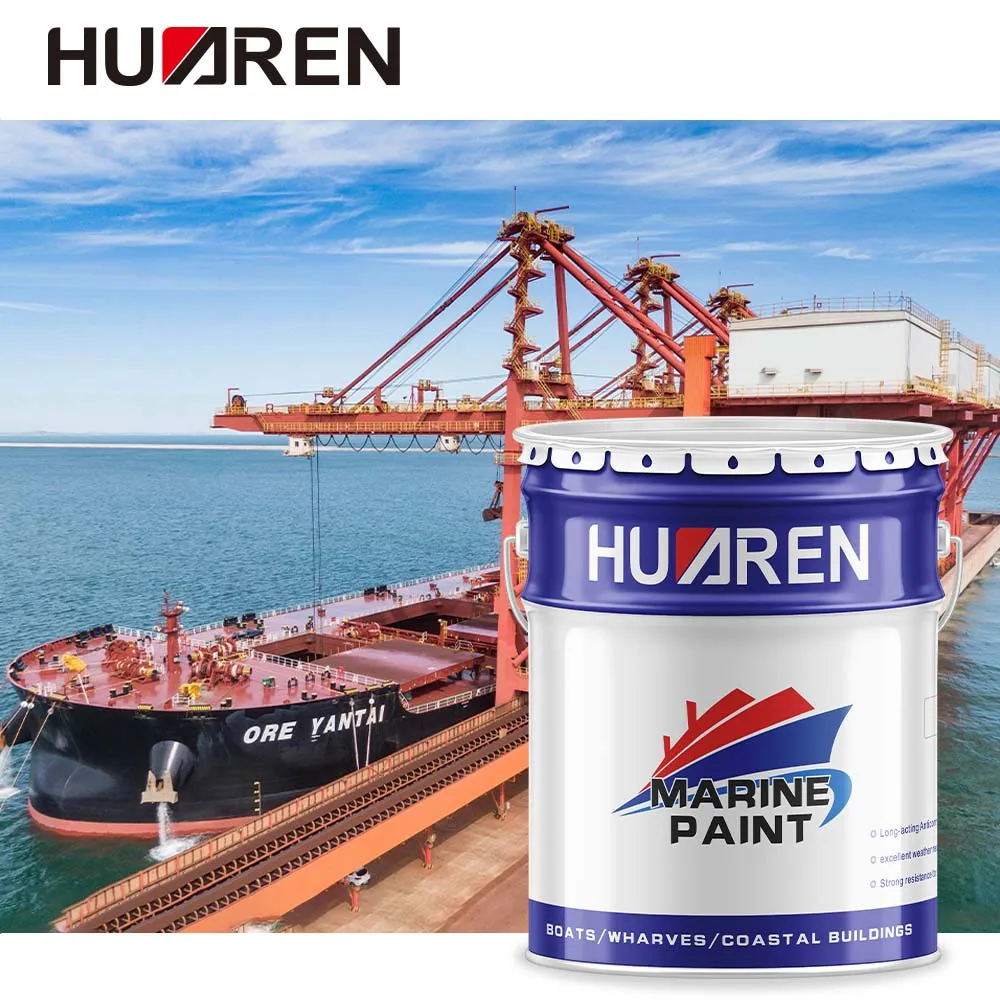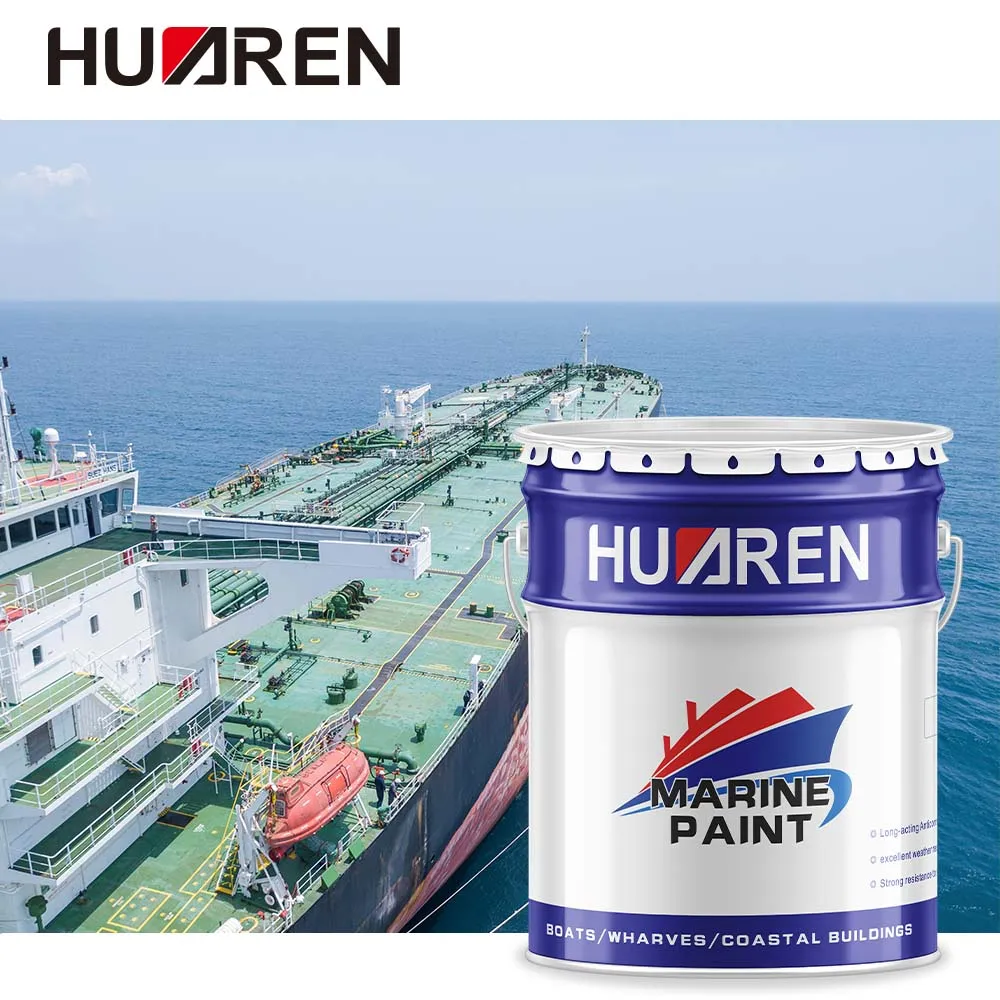● Regular na inspeksyon at pagpapanatili ng hull coating: Sa pamamagitan ng regular na inspeksyon at pagpapanatili, ang napapanahong pag-aayos ng nasirang coating sa ibabaw ng hull ay maiiwasan ang labis na pagbabalat ng antifouling coating at hindi sinasadyang paglabas ng mga kemikal.● Wastong pagtatapon ng basurang pintura at paglilinis ng wastewater: Sa panahon ng pagpapanatili ng barko at pagpapalit ng pintura, ang mga pamantayan sa pangangalaga sa kapaligiran ay dapat sundin, at ang basurang pintura at paglilinis ng wastewater ay dapat na maayos na hawakan upang maiwasan ang direktang pagtatapon ng mga pollutant na ito sa kapaligiran.
Batay sa China, ang Huaren Chemical Industry Co., Ltd. ay isang propesyonal na supplier at tagagawa ng mga pang-industriyang coatings at resins, na nag-aalok ng superyor na kalidad sa mga direktang presyo ng pabrika. Ang aming malawak na hanay ng mga produkto, kabilang ang mga acrylic paint, phenolic coatings, at marine antifouling primer, ay pinagkakatiwalaan ng mga industriya sa buong mundo. Makipagtulungan sa amin ngayon para ma-access ang mga nangungunang produkto at eksklusibong pampromosyong alok. Makipag-ugnayan sa amin para sa isang libreng quote!

What chemicals are contained in marine antifouling primer?
Marine antifouling primer is usually composed of a variety of chemical components that work together to prevent the attachment and growth of marine organisms on the surface of the hull. The following are several common types of chemicals in marine antifouling primers and their functions:
Biocides:
● Copper compounds (such as cuprous oxide): Cuprous oxide (Cu2O) is one of the most common antifouling agents. It kills microorganisms and other marine organisms attached to the surface of the hull by releasing copper ions, preventing them from growing and reproducing. The effectiveness of copper compounds makes them an indispensable component of marine antifouling primers, but their environmental impact has also attracted much attention.
● Organotin compounds (such as tributyltin, TBT): Tributyltin was once an extremely effective biocide that could inhibit the attachment of marine organisms for a long time. However, due to its extremely high toxicity to marine organisms and damage to the ecosystem, TBT has been banned worldwide.
● Other organic fungicides: Marine antifouling primers also contain other organic fungicides, such as isothiazolinone compounds, dithiocarbamates, etc. These compounds are often used in combination with copper compounds to enhance the antifouling effect and inhibit the attachment of copper-resistant organisms.
Resins and polymers:
● Self-polishing copolymers (SPC): SPC is a class of polymers used in self-polishing antifouling paints that gradually decompose and release active ingredients when in contact with seawater to keep the surface of the hull clean. The decomposition rate of SPC can be controlled by adjusting the chemical structure of the polymer, thereby extending the duration of the antifouling effect.
● Acrylic resins: Acrylic resins are commonly used in hard antifouling paints. They can form a hard, wear-resistant coating that provides long-lasting protection for the hull. Although acrylic resins themselves do not have a significant impact on the environment, the release of their degradation products and antifouling agents still needs attention.
Solvents and fillers:
● Organic solvents: Marine antifouling primers usually contain a certain amount of organic solvents to help the coating and drying. These solvents will evaporate during the drying process of the coating and be released into the atmosphere, affecting air quality. Common organic solvents include xylene, toluene and acetone.
● Fillers: Fillers such as silica, titanium dioxide, etc. are mainly used to enhance the mechanical properties of the coating and improve the surface finish. Although the filler itself does not directly pollute the environment, the release of fillers during the degradation of the coating may have a physical impact on marine organisms.

Does marine antifouling primer pollute the environment?
Although the use of marine antifouling primer significantly improves the operating efficiency of ships and reduces fuel consumption, its impact on the marine ecosystem cannot be ignored. The following are several major types of impacts that marine antifouling primer may have on the environment:
Environmental toxicity of copper compounds:
● Bioaccumulation of copper: Copper ions, as the main antifouling component in marine antifouling primer, can effectively inhibit the attachment of marine organisms, but after being released into the water body, they are easily combined with organic matter and sediments, thus existing in the environment for a long time. The bioaccumulation effect of copper may cause poisoning of marine organisms, especially benthic organisms, and be transmitted through the food chain, affecting higher-level marine organisms.
● Copper resistance of marine organisms: Marine organisms exposed to high copper concentrations for a long time may gradually develop copper resistance, which not only weakens the antifouling effect of copper compounds, but also may change the structure and function of the marine ecosystem.
Ecological risks of organic fungicides:
● Toxicity of organic fungicides: Many organic fungicides have a broad spectrum of biological toxicity, which can not only kill marine organisms attached to the hull, but also have negative effects on non-target organisms (such as fish, crustaceans and plankton). Aquatic organisms exposed to these organic fungicides for a long time may show symptoms such as growth inhibition, decreased reproduction rate and abnormal behavior.
● Persistent organic pollutants (POPs): Some organic fungicides are persistent and difficult to degrade, and are easily accumulated in the environment for a long time, becoming persistent organic pollutants (POPs). These substances not only cause damage to local ecosystems, but may also spread through ocean currents and affect a wider range of marine environments.
Solvent volatilization and air pollution:
● Volatile organic compounds (VOCs): The organic solvents in marine antifouling primers will evaporate during the coating and drying process, releasing volatile organic compounds (VOCs) into the atmosphere. VOCs can react with nitrogen oxides in the atmosphere to form ozone and fine particulate matter (PM2.5), which has a negative impact on air quality and endangers human health.
Degradation of marine antifouling primer and marine pollution:
● Microplastic pollution: Some resins and polymers in marine antifouling primers may degrade into microplastics in the marine environment. These microplastics not only absorb toxic substances in the environment, but may also be ingested by marine organisms, leading to problems such as gastrointestinal blockage and nutrient absorption disorders.
● Sediment pollution: Heavy metals and organic compounds in marine antifouling primers may be deposited to the bottom of the ocean during the peeling or degradation of the hull coating. Contaminated sediments may change the habitat of benthic organisms and pass through the food chain, affecting the entire ecosystem.

What are the measures to mitigate the environmental impact of marine antifouling primer?
Although the potential impact of marine antifouling primer on the environment is relatively serious, these impacts can be significantly mitigated by rationally selecting antifouling coatings, improving coating formulations, and implementing effective management measures.
Choose low-toxic antifouling coatings:
● Copper substitutes: With the improvement of environmental awareness, more and more antifouling coatings are beginning to use low-toxic or non-toxic copper substitutes, such as silicone resins, polymer coatings and environmentally friendly biocides. These substitutes can reduce toxicity to marine organisms while still providing effective antifouling protection.
● Non-biocidal coatings: Non-biocidal coatings, such as film antifouling coatings and fluorinated coatings, rely on their smooth surface properties to prevent biological attachment rather than releasing toxic substances. This type of coating is more superior in terms of environmental performance.
Improve the formulation of marine antifouling primer:
● Reduce the use of organic solvents: By developing high-solid content or water-based antifouling coatings, the use of organic solvents can be significantly reduced, thereby reducing VOCs emissions. Water-based antifouling coatings are not only environmentally friendly, but also reduce health risks to workers during construction.
● Optimize the release rate of fungicides: By adjusting the release rate of fungicides in antifouling coatings, the environmental emissions of chemicals can be reduced while ensuring the antifouling effect. The slow release mechanism of self-polishing coatings is an effective control method.
Strengthen coating management and waste disposal:
● Regular inspection and maintenance of hull coating: Through regular inspection and maintenance, timely repair of damaged coating on the hull surface can avoid excessive peeling of antifouling coating and unintentional release of chemicals.
● Proper disposal of waste paint and cleaning wastewater: During ship maintenance and paint replacement, environmental protection standards should be followed, and waste paint and cleaning wastewater should be properly handled to avoid direct discharge of these pollutants into the environment.

Based in China, Huaren Chemical Industry Co., Ltd. is a professional supplier and manufacturer of industrial coatings and resins, offering superior quality at factory-direct prices. Our wide range of products, including acrylic paints, phenolic coatings, and marine antifouling primers, is trusted by industries worldwide. Partner with us today to access top-tier products and exclusive promotional offers. Contact us for a free quote!
Palakasin ang pamamahala ng coating at pagtatapon ng basura:
